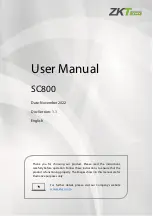
CHAPTER 8 CLOCK GENERATION FUNCTION
176
User’s Manual U15195EJ5V0UD
Caution Only an f
X
value for which 10
×
f
X
does not exceed the system clock maximum frequency (40
MHz) (i.e. 4 MHz) can be used for the oscillation frequency or external clock frequency.
When
5
×
f
X
, 2.5
×
f
X
, or 1
×
f
X
is used, a frequency of 4 to 6.4 MHz can be used.
Remark
Note the following when PLL mode is selected (f
XX
= 5
×
f
X
, f
XX
= 2.5
×
f
X
, or f
XX
= 1
×
f
X
)
If the V850E/IA2 does not need to be operated at a high frequency, use f
XX
= 5
×
f
X
, f
XX
= 2.5
×
f
X
, or f
XX
= 1
×
f
X
to reduce the power consumption by lowering the system clock frequency using software.
8.3.3 Peripheral command register (PHCMD)
This is an 8-bit register that is used to set protection for writing to registers that can significantly affect the system
so that the application system is not halted unexpectedly due to erroneous program execution. This register is write-
only in 8-bit units (when it is read, undefined data is read out).
Writing to the first specific register (CKC or FLPMC register) is only valid after first writing to the PHCMD register.
Because of this, the register value can be overwritten only in the specified sequence, preventing an illegal write
operation from being performed.
7 6 5 4 3 2 1 0
Address
After
reset
PHCMD
REG7 REG6 REG5 REG4 REG3 REG2 REG1 REG0
FFFFF800H
Undefined
Bit position
Bit name
Function
7 to 0
REG7 to
REG0
Registration code (arbitrary 8-bit data)
The specific registers targeted are as follows.
•
Clock control register (CKC)
•
Flash programming mode control register (FLPMC)
The generation of an illegal store operation can be checked with the PRERR bit of the peripheral status register
(PHS).
Содержание PD703114
Страница 2: ...2 User s Manual U15195EJ5V0UD MEMO ...
















































